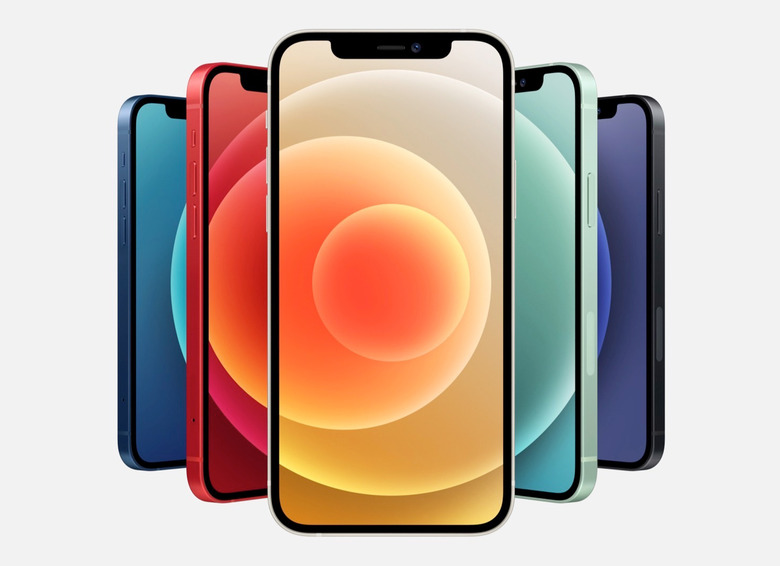Top Apple Insider Says This Is When The iPhone Will Finally Lose The Notch
- An insider with a reliable track record says the iPhone 14 series will feature a significant redesign in 2022.
- Some or all the 2022 iPhone models will feature hole-punch displays similar to what's available on Android devices like the Galaxy S and Note series.
- It's unclear whether an iPhone without a notch would still support Face ID recognition, but one Android device maker has already demoed a potential solution.
We've been referring to the bezel at the top of the iPhone screen as the notch from the moment the final iPhone X design leaked in the weeks preceding Apple's September 2017 event, where the handset was formally unveiled. Every iPhone that launched after that aside from the affordable iPhone SE 2020 comes with the same notch. The purpose of the cutout is to house the cameras and sensors that power the most sophisticated authentication available on mobile devices. The notch hides the TrueDepth camera system that enables Face ID, a feature that only a few Android vendors have attempted to copy. The notch also gave the iPhone a unique design, one that almost every Android handset maker copied in 2018 before they realized there are other ways to make all-screen phones.
Since 2017, we've been waiting for Apple to shrink the size of the notch, especially since most Android devices transitioned to the hole-punch display that Samsung pioneered. Now, an insider with an accurate track record is reporting that Apple is almost ready to release the first new flagship iPhone without a notch since 2016.
Analyst Ming-Chi Kuo outted the design change in a note to investors that MacRumors shared. He said that at least some 2022 iPhone models will abandon the notch in favor of a "punch-hole display design" similar to Samsung's screens for the high-end Galaxy phones. Kuo said the punch-hole display design would be adopted by high-end 2022 iPhones at a minimum. If yields are good enough, all 2022 models might use the design. Kuo didn't say what sort of biometrics authentication system will be used on these iPhone 14 models.
Samsung was one of the few Android vendors that did not copy the notch in 2017. If this report is correct, then Apple might copy Samsung's Infinity-O display design. That's something Android users will be quick to point out. However, Apple has patents describing hole-punch display designs that precede the Galaxy S10 series, proving that Apple has been considering this particular technology for quite some time.
More importantly, Samsung has been making Infinity-O displays since 2019. It has plenty of expertise and yields must have significantly improved since then. What's peculiar in Kuo's note is that he includes production yields as the reason that might prevent Apple from using the design in all iPhone 14 models. This might suggest that the screens might have features that aren't available in current Galaxy S and Note phones that feature hole-punch displays.
Apple is also rumored to be adding under-display Touch ID to the iPhone at some point in the future, or a combination of Touch ID and Face ID. It's unclear what sort of authentication system next year's iPhones will use.
One solution came from Chinese smartphone maker ZTE. The company showcased an under-display 3D face recognition system at MWC 2021 Shanghai last week. ZTE was also the first handset maker to have launched a phone with an under-display selfie camera last year.
Unfortunately, one problem that impacts under-screen cameras would hurt the TrueDepth Face ID system, too. That's light transmission loss, since light would have to travel through the display's OLED and glass layers to reach the sensors. ZTE is fixing the problem by increasing the pixel density of the projector that creates the 3D map of the face by over 10 times. The company also used a 120Hz screen and increased the pixel density of the area above the camera from 200 PPI to 400 PPI. ZTE says the system is secure enough for mobile payment authentication.
Apple would not use ZTE tech in its phones, but if it's studying under-display camera technology, it must also be looking at ways to place Face ID sensors beneath the display. That's only speculation, however, based on Kuo's lack of specifics about Apple's biometric sensor choices for the iPhone 14.
Kuo also made a few additional claims about the upcoming iPhones, saying that this year's new iPhones will feature smaller notches than previous devices and that the iPhone SE (2022) will stick to the same traditional 4.7-inch screen design.
